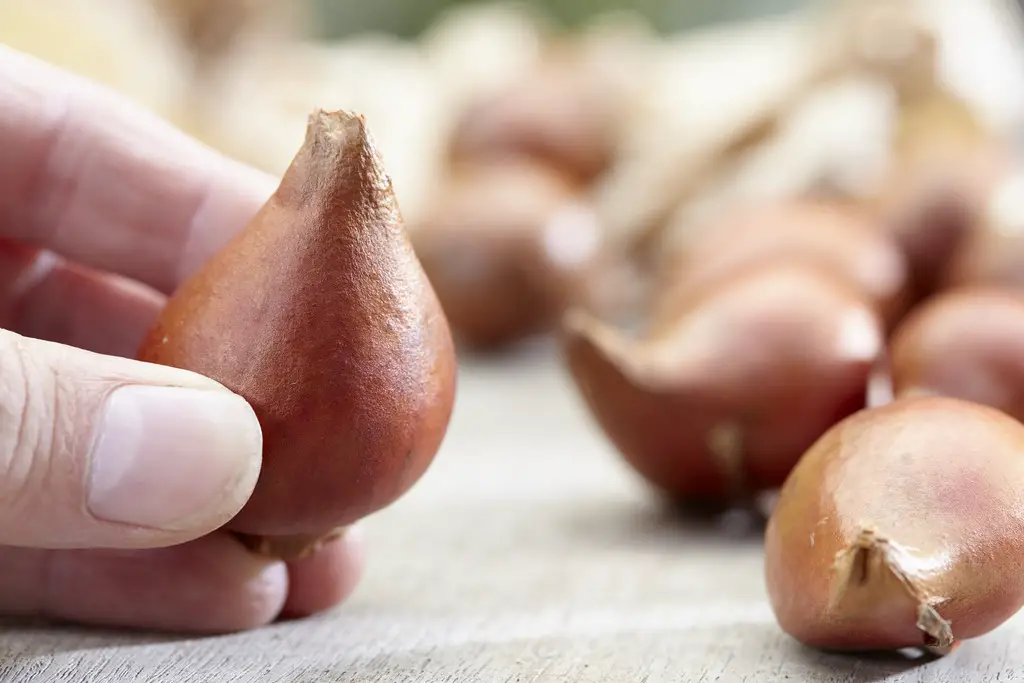
Bulbous plants (including those that form an underground organ not in the form of a bulb, but a tuber; for example, anemones), due to their rich colors, are an effective element of garden compositions. They are suitable for flower beds and containers. They look beautiful on lawns, under leafless crowns of deciduous shrubs and against the background of coniferous plants.
To enjoy garden flower types such as tulips, daffodils, crocuses and hyacinths, you need to plant their bulbs and tubers in the fall. September and October are good months for planting spring flowering bulbs. And you can plant lilies both in autumn and in spring. Please note that bulbs of individual varieties may differ from each other in their splendor, color and appearance. Therefore, do not despair if, upon purchase, you find planting material of a small size.
Popular bulbous flowers
Let’s see what the bulbs of the most popular garden flowers look like. Usually the term “flower bulbs”, which is widely used, often refers to several types of plants that store nutrients in various underground organs for the winter. These substances are necessary to maintain the plant outside the growing season. They also ensure the rapid growth of bulbous flowers even in adverse conditions (for example, during a cold spring). The underground organ “bulb (the name of very short shoots)” is most common. It accumulates nutrients in fleshy scales.
The structure of the bulb
The most popular types of bulbous flowers are tulips, daffodils, hyacinths, lilies and alliums. If you look closely at the bulb in cross section, you can see fleshy scales. They surround the flower buds and leaf buds that are inside, in the center. It is highly undesirable to prune the aboveground part of the plant (green leaves) from a faded plant, as it helps the bulb to store nutrients. It is necessary to get rid of only the dried parts of the plant.

In the lower part they have a bottom with a heel, from which roots appear. Some bulbs are covered on the outside with a thin protective layer, a dry integumentary scale called a tunic (for example, tulips). Others have no protection at all (like lilies), making them more susceptible to drying out. Onions grow mostly underground to the surface of the earth.
According to the method of formation of scales, two types of bulbs are distinguished: membranous and tiled. The membranous bulbs of the tulip, narcissus, camassia, allium. They have succulent scales that cover each other and form concentric circles around the resumption point. Each scaly leaf has an axillary bud. Tiled – in lilies and hazel grouse. They consist of scales that do not touch each other at the edges.
If the onion is a compressed shoot with scales, then the tubers are thickened shoots. Both the tulip bulb and the crocus tuber are fleshy organs that can store nutrients and water, but they differ in structure. Tubers do not have a heel from which roots grow. Roots and leaf buds (eyes) are distributed over its entire surface.
tulip bulbs

Tulip bulbs are egg-shaped and covered with dry brown scales on the outside. It is also worth knowing that the bulbs can vary considerably in size depending on the variety. So, for example, if you order bulbs of different varieties of tulips in the FLORIUM online store, they look different. The bulbs of some botanical (wild) tulips are 3 to 4 cm (circumference), while the bulbs of modern varieties boast a circumference of up to 15 centimeters. In addition, the scales of botanical tulip bulbs are slightly thicker, and dense hairs cover them from the inside. This amazing property protects plants from drying out.
narcissus bulbs

The narcissus bulb has an elongated shape. It is covered with dry and thin scales of light brown color. On the surface of the outer scale, you can see the neural network. Gloves are recommended when handling daffodils. Since the juice contained in the bulbs, in direct contact with the skin, can cause allergic reactions.
Crocus bulb

A crocus bulb is a corm, from a professional point of view. Its appearance may vary depending on the species and variety. Bulbs can be either spherical or slightly flattened. And their size is from 5 to 8 cm (in circumference). The scales are brown, dry and clearly structured. For example, crocuses have magnificent corms of a spherical shape and with a circumference of up to 8 cm.
Hyacinth bulb

Usually rounded and plump. It can reach up to 20 cm in circumference. The outer scales are dry and rather thin. Interestingly, varieties of hyacinths with white and yellow flowers have a white to silver bulb, while varieties with pink, red, blue or purple flowers have red or purple scales.
Lily bulb

Classified as a “true bulb”. This means that it consists of numerous fleshy scales that are tiled. However, it is not covered by any dry outer shell. Lily bulbs, depending on the type and variety, may vary in color and size. You can buy yellow, white and purple copies. Their circumference, in turn, can range from several to even 30 centimeters.
Note that lilies form two types of roots – those that grow from the heel of the onion and those that form above it. But the latter grow from the side of the shoot, which is below the surface of the earth.
See also: Forcing bulbous plants at home
Published: 26.11.2019

